#P.R. strategy
Explore tagged Tumblr posts
Text
6 Must-Know B2B SaaS Marketing Trends for 2025

As the B2B SaaS landscape evolves, companies face both challenges and opportunities in achieving sustainable growth. The rise of customer expectations, stiff competition, and a highly saturated & expensive digital advertising ecosystem necessitate a rethinking of marketing strategies. In the following article, we have articulated key marketing trends shaping the B2B SaaS industry in 2025.
Focus On Customer Retention
Customer retention is critical to driving revenue and profitability in SaaS. To minimize churn and enhance product engagement, marketing teams must develop targeted retention campaigns. One effective approach is implementing loyalty programs, which can take the form of:
Priority Support Based on Product Usage: Offering tiered support, where high-usage customers receive priority service. This not only enhances their experience but also reinforces their value to the company.
Discounts on Purchase of Additional Modules: Offering attractive discounts on add-on modules and complimentary products. This strategy increases revenue while deepening customer engagement.
Recognition at Customer Events: Highlighting loyal customers at user conferences or webinars. Recognized customers often become brand advocates, sharing their positive experiences with others.
Early Access to Product Updates and Upgrades: Giving long-term customers a first look at new features or products. This exclusive access makes customers feel valued and fosters engagement with the platform.
2. AI-Powered Marketing Tools and Automation
Artificial Intelligence (AI) is revolutionizing B2B SaaS marketing by streamlining processes and enhancing personalization. Key applications of AI in marketing can include:
Building Prospect Data: AI-powered tools like Apollo have transformed the way SaaS companies build prospect data. By analyzing buyer intent, these tools can identify prospects with high potential, and segment them effectively. Marketing teams can target these segments through tailored campaigns, streamlining efforts, and maximizing impact.
Crafting Compelling Messaging: AI-powered platforms can analyze audience preferences and behaviours to generate highly personalized and persuasive email content, increasing engagement and response rates.
Creating Pitch Videos and Demo Scripts: AI enables marketing teams to produce professional-quality pitch videos and scripts for webinars quickly, significantly reducing the cost of production and time to launch these marketing assets.
3. Expansion of Account-Based Marketing (ABM)
In 2025, Account-Based Marketing (ABM) should become a primary focus for B2B SaaS companies aiming to deliver highly personalized outreach. As digital ads and social media channels become increasingly expensive and saturated, ABM offers a more targeted and cost-effective approach. ABM enables marketing teams to tailor their messaging to specific industries, use cases, and target audiences ensuring higher engagement. ABM approach can include:
Combining Email Marketing with Re-Targeting Ads: By integrating personalized email campaigns with re-targeting ads, SaaS companies can keep their brand top-of-mind for key accounts across multiple touch-points.
Innovative Direct Mail Campaigns: Sending carefully curated snail mail letters to high-value accounts can add a personal touch, breaking through the digital clutter and creating a lasting impression.
ABM’s ability to focus resources on the most valuable accounts ensures effective outreach. With proven potential to deliver strong ROI, ABM is a must-adopt strategy for SaaS companies in 2025
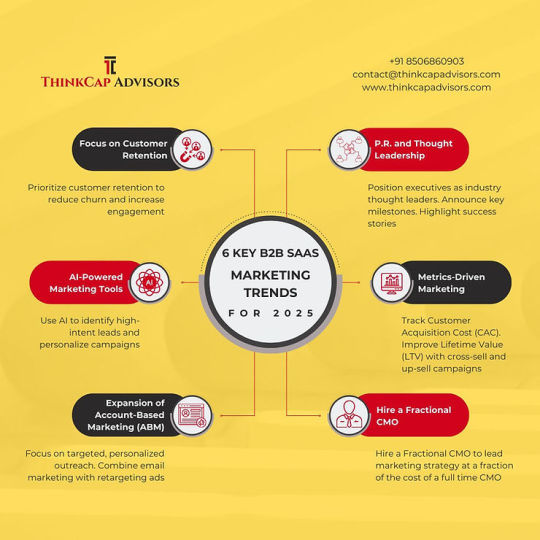
4. Focus on P.R. and Thought Leadership
Public Relations (P.R.) is re-emerging as a vital marketing channel for B2B SaaS companies. A well-crafted P.R. strategy can amplify brand visibility and position key executives as thought leaders in the industry.
Positioning Key Executives: P.R. efforts can include publishing articles, securing interviews, and leveraging byline opportunities to showcase executive expertise and establish credibility.
Announcing Major Milestones: P.R. can be the vehicle for communicating product launches, strategic alliances, and significant customer wins, ensuring these milestones reach the right audience.
Driving Brand Advocacy: P.R. firms can identify opportunities for customers to participate in stories and events, creating a platform for advocacy. These engagements help build trust and highlight real-world success stories.
As a marketing consulting firm specializing in B2B SaaS, we believe that by leveraging public relations effectively, SaaS companies can create a strong narrative, enhance brand reputation, and foster deeper connections with their target market.
5. Metrics-Driven Marketing
As B2B SaaS companies continue to grow their customer base, it is important to track customer acquisition costs. Companies must:
Map Customer Acquisition Cost (CAC): Mapping CAC to specific marketing channels helps identify which channels deliver the best ROI. By understanding channel performance, companies can prioritize budget allocation to the most effective channels.
Calculating Lifetime Value (LTV): By analyzing customer data, including industry type, usage patterns, and purchase behaviour over time, SaaS companies can accurately determine the lifetime value (LTV) of their customers. This analysis enables businesses to segment new customers based on similar profiles and craft targeted cross-sell and up-sell programs to improve revenue per customer.
6. Hire a Fractional CMO
A fractional CMO can be a transformative asset for B2B SaaS companies. By offering strategic leadership, mentoring in-house teams, and applying their cross-industry expertise, Fractional CMOs drive exceptional outcomes. Leveraging an extensive network of marketing service providers and agencies, they can deliver comprehensive solutions tailored to business needs—all at a fraction of the cost of hiring a full-time CMO.
Conclusion
As a marketing consulting services firm specializing in B2B SaaS, we believe that in 2025, companies must embrace an omni-channel marketing strategy that seamlessly integrates offline and online channels. Additionally, businesses need to move beyond the conventional notion that customer retention is solely the responsibility of the customer success team. Marketing must take an active role in retention by launching targeted campaigns that drive customer advocacy and enhance lifetime value (LTV).
#marketing consulting services#fractional cmo services#marketing consulting firm#P.R. strategy#Account-Based Marketing (ABM)
0 notes
Text
"A dark shadow on an otherwise beautiful record": PR, McCartney and The Beatles' Split.
“No, I wasn’t angry – shit, he’s a good P.R. man, that’s all. He’s about the best in the world, probably. He really does a job. I wasn’t angry. We were all hurt that he didn’t tell us that was what he was going to do.”
(John Lennon in Rolling Stone, 21 Jan 1971)
To cut to the chase, I want to explain why this statement from John, claiming Paul is a good PR man is wrong. Largely thanks to quotes like this from John, Paul gets painted as the Beatle with a good media strategy, the insinuation being of course, that he is disingenuous and inauthentic. I don’t believe this is true in general, but what I really want to focus on, and what John is referencing in that quote, is the publicity around Paul’s 1970 album McCartney, which got all tied up with the news of The Beatles split, and how actually, mistake after mistake was made, rather than it being what John claims - a purposeful move to get more publicity for his album.
This isn’t a moral judgment on either John or Paul, or me saying Paul is stupid for not doing more. In fact, I think it playing out this way is far more interesting and we can gain a lot of insight about his mindset and relationships from his press activities around this time.
I’m going to do this chronologically as much as possible, but before we dive in it will be helpful for us to keep a few basic PR strategies and tools in mind to help us understand what’s (or perhaps more importantly, what’s not) happening. So what are some things that make for good public relations?
A clear, cohesive message. What's the story of the album? There should be key phrases that are repeated throughout press activities, and also allow an easy fall back when faced with questions that haven’t been prepared for. Broadly speaking, you want to highlight the good and ignore the bad, without lying or appearing to hide anything.
A good relationship with the press. Having even a couple of journalists on side can be a huge benefit, it makes for friendlier interviews and more forgiving assessments (which isn’t to say journalists are being fake or can be incentivised, but it’s just human nature that if you make friends, you’re going to have an easier time.) Furthermore, you want a reputation in the industry as someone that’s nice to interview, because journalists can and will talk, and if they’re going to come in with a preconception about you, you want it to be positive.
Reactive messaging. If something comes out that you don’t want to be out, be prepared. Ideally potential problems have already been planned for. Know which journalists to reach out to, know what the story is, then be prepared to go quiet and leave things alone.
Pre-prepared Q&As or FAQs should answer more questions than they generate. They also shouldn’t require in depth answers - save that for conversations where there’s time for explanations.
So, let’s start back in 1969. The Paul is dead rumours are in full force and Paul, Linda, Heather and Mary are living up in Scotland, trying to escape the goings-on back in London.
On 24 October, Paul gives an interview to the BBC dispelling the rumours about his death, which goes out on 26-27 October in two parts. A few days later, Dorothy Bacon and Terrence Spencer from Life Magazine make the trip up to his farm to try and get another interview with him, for a piece they’re also doing about the rumours.
Paul throws a bucket of dirty water at them, they get pictures, and then realising how this will look if published, Paul gives them an interview and promises to have Linda send them some family shots for the articles. In exchange they get rid of the photos they took earlier in the day.
So the first point here, that hopefully I don't need to spell out, is that you don’t wanna go throwing buckets of water at journalists. Thankfully, Paul did realise this and course corrected, but I can only imagine what the fall out would have been had he hadn’t gone after them. But what’s important for this story is that Paul is fed up with journalists and having to share his private life, he's emotional, and his instinct is to lash out.
The other thing that’s interesting here is a line that goes completely unnoticed. At this point, The Beatles split is not public knowledge.
The Beatle thing is over. It has been exploded, partly by what we have done, and partly by other people. We are individuals, all different. John married Yoko, I married Linda. We didn’t marry the same girl.
(Paul McCartney in Life Magazine, November, 1969)
This is huge, and it doesn’t get picked up by anyone else. It’s not made a big deal of in the Life article, it’s perhaps the clearest statement we get about the state of The Beatles, and yet it flies under the radar. I’d love to know exactly what the deal is here, but there’s not much we can do about that, but what we should start keeping in mind in this: there is no plan in place around The Beatles split. There is just an agreement to not make it public yet.
The McCartneys go back to London and Paul starts recording music with his new equipment at home. Later he books studio time when he decides he can make an album out of the songs he’s been working on.
Some key dates:
Paul finishes the album on 25 February.
The album is set to release on 17 April.
Ringo’s album get rushed to release two weeks early on 27 March and Let It Be is also supposed to be released in April.
On 31 March John and George send a letter, delivered by Ringo, asking Paul to delay the release of McCartney. Paul refuses and Let It Be gets moved instead.
Which brings us to April. Prior this, Paul realised that if he’s going to be putting an album out he’s going to have to do some publicity, but the problem is… well, there’s a few; he’s never had to do publicity for a solo album and simply doesn’t have the knowledge, his relationship with Apple has completely deteriorated which includes the people who have been handling this stuff for him in the past, and lastly, he doesn’t want to be dealing with press. Refer back to him and the bucket.
Thankfully, Peter Brown and Derek Taylor from Apple’s press office, tell him he does need to do something and to an extent, he listens. They select a handful of papers he’ll do interviews with, and Peter Brown puts together a Q&A for Paul to answer, which will go out to journalists in the press kit with their early copy of the album (x).
What I would love to do here is a question by question breakdown of that press kit Q&A but I’m conscious of how long this is already so I won’t… but before we get into that, here are a few more key events:
7 April: The Eastmans issue a press release with news about Paul’s solo album and his acquisition of the film rights for Rupert The Bear. This is covered mostly by American press on 8 April who speculate that this could mean the end of The Beatles. (An important note here is the lack of communication between the Eastmans and Apple, not knowing what materials each other are providing is not helpful).
9 April: McCartney press kits are sent to journalists.
9 April: Before Don Short at the Daily Mirror clocks off for the night, he is called by an Apple employee who tells him Paul has definitely quit.
10 April: The Daily Mirror breaks the news with the headline ‘Paul Is Quitting The Beatles’.
10 April: After doing interviews all day, Derek Taylor issues a statement regarding The Beatles. It doesn’t say much, which he acknowledges, because there’s not much he can say at this point. Another important note here, is that not even the head of publicity of Apple knew what was going on with The Beatles. There is no communication, and with no communication there can be no plan.
(Paul McCartney Project page that covers all this)
So what happened that made The Beatles split go from speculation to a certainty? It’s all to do with that Q&A. Of course, with the Eastman’s press release people were going to start connecting the dots, but that call Short got from his source isn’t presented as a rumour.
Now, there’s a lot to say about this Q&A because Paul's answer are so unhelpful and you can feel his attitude. I think the fact this was allowed to go out is a fundamental piece of evidence of Paul’s relationship with Apple at the time. No one wanted to tell him no, and he certainly wasn’t going to give them more than the bare minimum.
And lets be really clear here. This is a Q&A for his new album. Obviously the state of the Beatles was going to be brought up which is why Peter Brown included the questions, but the number of the questions on that topic and then Paul’s answers, make it really confusing and it’s no wonder this is what press picked up on, rather than just talking about Paul’s album. There are 41 questions in total, and 13 of them are asking him about his relationship to the other Beatles, Apple and Klein. That’s just over a third of the Q&A talking about things that he doesn’t want to be talking about. The fact he didn’t just tell Apple that he wasn’t going to answer some of the questions shows how little forethought went into this on his part. There was a much more concise way to do this, and I do not believe for a second Paul wanted further questions about the state of the Beatles when he’s trying to promote his first solo album.
And remember what I said at the top, about how if you’re gonna be promoting something in the press you want clear messaging around it? That’s already going be difficult now this Q&A has tied so much of the Beatles split into their messaging, despite Paul actually having a pretty clear idea of what the album’s story is aside from that, but the answers Paul gives to those questions just add further confusion.
Link to full Q&A.
Q: Were you influenced by John’s adventures with the Plastic Ono Band, and Ringo’s solo LP? A: Sort of, but not really. Q: Will they be so credited: McCartney? A: It’s a bit daft for them to be Lennon-McCartney-credited, so ‘McCartney’ it is. Q: Will the other Beatles receive the first copies? A: Wait and see. Q: Is it true that neither Allen Klein nor ABKCO have been nor will be in any way involved with the production, manufacturing, distribution or promotion of this new album? A: Not if I can help it. Q: Did you miss the other Beatles and George Martin? Was there a moment eg, when you thought ‘wish Ringo was here for this break?” A: No. Q: Are you planning a new album or single with the Beatles? A: No. Q: Is this album a rest away from the Beatles or the start of a solo career? A: Time will tell. Being a solo album means it’s the start of a solo career… and not being done with the Beatles means it’s a rest. So it’s both. Q: Is your break from the Beatles temporary or permanent, due to personal difference or musical ones? A: Personal differences, business differences, musical differences, but most of all because I have a better time with my family. Temporary or permanent? I don’t know. Q: Do you see a time when Lennon-McCartney becomes an active songwriting partnership again? A: No. Q: What is your relationship with Klein: A: It isn’t – I am not in contact with him, and he does not represent me in any way. Q: What is your relationship with apple? A: It is the office of a company which I part-own with the other three Beatles. I don’t go there because I don’t like the offices or business, especially when I’m on holiday.
So what can we get from this? It’s the start of a solo career for Paul, he doesn’t know if The Beatles break is permanent or temporary, he’s not in contact with Klein and Klein doesn’t represent him, he owns part of Apple but he doesn’t like going there, and he seems very certain that the Lennon-McCartney partnership is over, despite not being sure if The Beatles will play together again or not.
It’s a mess. It raises further questions. The only reason I can think of for it being so long is Peter Brown trying to cover absolutely everything he could think a journalist would ask, but it’s given Paul far too much scope for muddled answers, and in some cases, factually incorrect ones. He is tied up with Klein whether he likes it or not, because Klein’s tied up with Apple and Paul still has a contract with them.
It’s no wonder that this becomes the focus of the media narrative, and it makes Paul panic.
So on 16 April, the day before McCartney was released, Paul sits down with journalist Ray Connolly. And we move from story making, into reactive messaging. There is some thought behind this - Connolly is friendly with The Beatles and had actually already been aware of the split thanks to an off the record chat with John, so he was a good choice. The interview was published in the Evening Standard, a few days after the album had come out.
And here’s why you want a friendly journalist to talk to, because as the world rushed to say that Paul had broken up the band, Connolly led his article with this:
Paul McCartney didn’t kill the Beatles. If the group is dead, McCartney might be seen as the last survivor. If he has quit, and he still hasn’t confirmed it, he was the last to go.
(Paul McCartney in the Evening Standard, 21-22 April 1970)
However, the interview is also extremely telling about where Paul’s at emotionally in this moment.
A few days ago Paul McCartney decided to break his year-long silence and be interviewed. He wanted to clear up the confusion about his relations with the other Beatles and Allen Klein, and to kill the rumours that he was now ‘a hermit living in a cave somewhere with a ten-foot beard’. He wanted to show that he really was a happily married man with ‘a nice family and a good life’. But most of all he wanted to talk, to work things out in conversation, as much, I suspect, for his own benefit as anything.
This is not what you want to be doing with a journalist, you want to have this worked out before the conversation.
We met for lunch in a Soho businessman’s restaurant. With hardly moments for the hellos, he’d launched into his theme, talking rapidly and intently, and only occasionally allowing Linda to come in as support and verification. He wanted to put it all straight, to show that no one was to blame for what had happened, and when after two and a half hours’ non-stop talking he had cleared up his mind and mine too, he laughed, said he felt better now, got into his car and went home.
This demonstrates the lack of media training he had. It’s a stark difference to the confidence he had doing press with the other Beatles, on his own and with a particular idea to get across he appears nervous and controlling. Long form interviews like this are a marathon, not a sprint, and had he had an advisor or representative that was willing to push back against him, he would have known how to handle this better.
Moreover, an interview of this sort should have been done and published prior to the album coming out, or at least on the day of. Yes, there were always going to be questions about The Beatles tied up with this release, but one long interview like this, that had been properly prepared for, could have gone a long way to keeping the story straight. He also, despite his steamroller-ing of the conversation to begin with, comes across much more balanced about the situation than he does in those Q&A answers, so leading with something like this would have put him on much better footing.
So let's just pause here. What have we got so far? We've got Paul wanting to do as little press as possible, and with a breakdown of communication with his press team resulting in minimal planning and advice. This goes completely against the picture John is trying to paint.
And I’m not done yet. Because now we need to talk about the response to the album which wasn’t what I imagine Paul had wanted. There are two reviews I’m going to focus on here, firstly from Disc & Music Echo, written by Penny Valentine.
I don’t know what he was thinking when he planned this album. Perhaps he is laughing at us all. That’s fine, but it’s a pretty cruel way of doing it… almost a betrayal of all the things we’ve come to expect.
(Disc & Music Echo review, 18 April 1970)
It’s really harsh, but also this is within her right as a journalist. And what should someone do if they’re getting bad reviews? Ignore them. Thank the fans. Thank the people who say nice things. Don’t highlight negative attention, and certainly don’t lash out.
And look, there’s a lot to be said about Paul, Linda, John and Yoko’s press communications over the 70s, the Melody Maker letters spring to mind, and I’m very aware that I’m looking at this from 2025 when PR is much bigger and better oiled machine, almost to the point of it being quite boring and predictable. I do, however, also think that ‘don’t lash out at journalists who don’t like your work’ is common sense.
So Paul and Linda writing to Disc & Music Echo is a bit much to my eyes:
Dear Penny hold your hand out you silly girl I am not being cruel or laughing at you. I am merely enjoying myself. You are wrong about the McCartney album. It is an attempt at something slightly different, it is simple, it is good and even at this moment it is growing on you, love. – Paul and Linda McCartney.
(Paul and Linda's telegram to Disc & Music Echo, 25 April 1970)
It’s condescending, and if you want to plant the seeds of what your album is meant to be, there are much better places and ways to do it. Again this is reactive, showing little to no planning earlier in the year.
But here’s the thing that actually, completely baffles me. On the same day, in the same paper, another article gets published, this time by Derek Taylor, with the by line reading ‘Derek Taylor, Beatles Press Officer’. This just shouldn't happen. I can’t think of another case where someone’s PR is coming to their rescue in print. That’s not their job, and yes, Taylor used to be a journalist but he’s not anymore. I think this is way more to do with the way the people that have been with the Beatles since the early days are so emotionally wrapped up in this, they weren’t the people that should have been handling this.
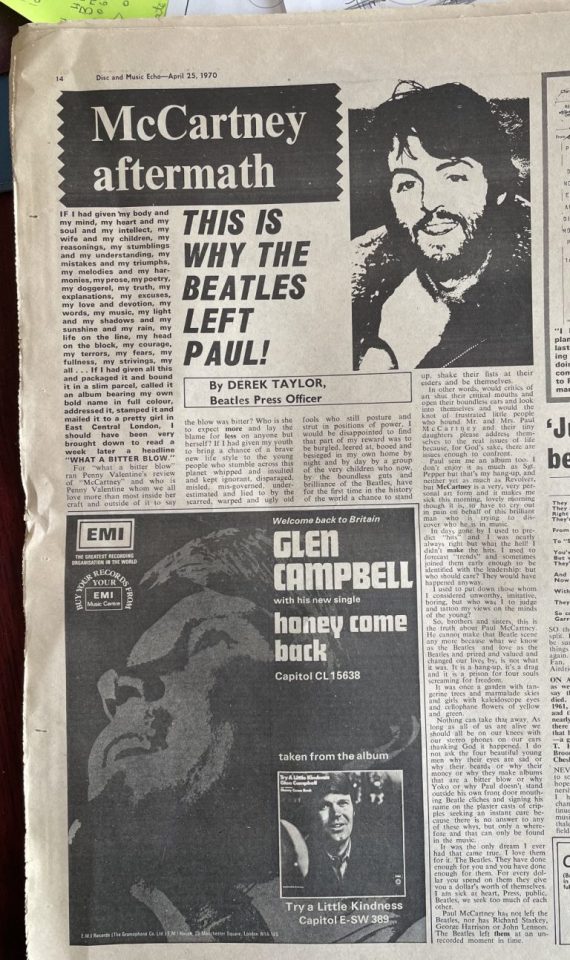
(x)
It also shows though, that however much Paul was distancing himself from Apple, there were people still there who loved him. It’s an emotional, beautifully written piece calling for people to leave Paul alone, but also not a good PR move, especially when he’s highlighting a specific journalist. Whether Paul asked Derek to do this, or Derek did it of his own accord, I don’t know, but it looks defensive and if I was a journalist, I’d be rolling my eyes.
Which brings us to the final part of this, the Rolling Stone review, published on 14 May 1970, nearly a month after the album came out, and largely not about the album at all, but a lot of focus on Paul’s handling of the situation.
The review of the actual songs is pretty complimentary, but this is also a personal attack on Paul.
(Full review)
Unfortunately, there is more to this album than just music. Accompanying the release of McCartney was a mass of external information — all of it coming directly from Paul himself — which casts real doubt on the beautiful picture which the songs create.
The sheets contain even more assertions about how happy and peaceful Paul and Linda are these days, and some interview statement from Paul concerning his relationship to the Beatles — statements which drip a kind of unsavory vindictiveness.
My problem is that all of the publicity surrounding the record makes it difficult for me to believe that McCartney is what it appears to be. In the special package of information which Paul wanted to include with the album we find startlingly harsh statements.
The lasting effect of this publicity campaign is to cast a dark shadow on an otherwise beautiful record. Listening to it now I cannot help but ask if Paul is really as together as the music indicates, how could he have sunk to such bizarre tactics?
I don't think this needs much commentary. You know something’s gone wrong with your PR when that becomes the focus, rather than the thing you’re actually trying to promote.
If we return to the four things I listed above, I think we can pretty resolutely lay out what I wanted to do.
Was there a clear, cohesive message? Around the album itself, sort of, Paul knew what it was. But it got tied up with the news of The Beatles split, the messaging around which was confusing with no one sticking to the same story. He also didn't do enough before the album came out, to get that messaging about his album stuck in people's heads. So overall, no.
Did he build good relationships with press? No. He threw a bucket at one. He provided confusing press kit material, even to journalists he was friendly with he came across in a manner that was worth noting in an article, he sent a bitchy telegram to a journalist who wrote a bad review, and this all culminated in Rolling Stone spending more time talking about his publicity than his album.
Did Paul have reactive messaging prepared? Evidently not, and then given the chance to provide some, he came across as panicked to the journalist he was speaking to.
Did his Q&A provide clear, simple answers to common questions he was likely to get asked? No, it was overly long, asking the same questions in multiple ways and no editing was done to his short, snappy, confusing, and incorrect answers.
I don’t want to give the idea that Paul, overall, is just shit at PR. (I mean, there's a difference between being a good spokesperson and good at PR but I won't get into that). He’s a highly successful musician who by all accounts, is now extremely good at interviews and making journalists feel at ease. He’s Paul fucking McCartney. But John saying this, in direct reference to this period of press activities is just not true. The album did well for Paul in the charts and sales, yes, but I’d argue that’s despite all this, rather than because of it.
And it’s also important to reiterate, that Paul simply wasn’t interested in doing a lot of publicity. He wasn’t even sure this was going to be an album when he started writing the songs. He didn’t want people coming to his farm, invading his new family life (and rightly so), he didn’t want to be on TV or the radio every day. That’s why his Q&A is so terse and why he hadn’t put any thought in how he was going to talk about The Beatles. And whilst how he felt is understandable, what he needed were a team around him willing to push back, steer him, and were separate from Apple. That’s the only way, I think, this could have gone differently.
Even then, he probably wouldn’t have listened to them anyway:
I don’t think I need a manager in the old sense that Brian Epstein was our manager. All I want are paid advisers, who will do what I want them to do. And that’s what I’ve got.
(Paul McCartney in the Evening Standard, 21-22 April 1970)
And that’s really the crux of it all, because you can’t do good with PR with someone who doesn’t want to take advice and thinks they know best. And I love him for it.
#paul mccartney#the beatles#john lennon#linda mccartney#ref:mccartney#ref:paul#ref:breakup#ref:press#please feel free to let me know if i've missed anything or made a mistake#this is really just my musing on a weird af pr campaign and so i've probably missed things#but hopefully it makes sense!#there's also A LOT i could have said about why i think john even says this#but that's gonna have to be another post for another day
99 notes
·
View notes
Text
Kanye West went on a disturbing, viral rant for several hours overnight — going after critics who have slammed his marriage, and calling himself a Nazi in more antisemitic remarks.
The rapper, 47, initially tweeted about his relationship with his wife, Bianca Censori, and their nudity stunt at the 2025 Grammys, in the all-caps spout.
“I have dominion over my wife,” the “Runaway” rapper wrote, adding that their relationship isn’t “no woke as[s] feminist s – – t. She’s with a billionaire why would she listen to any of you dumb ass broke bitches.”
He went on to praise Adolf Hitler, writing: “Hitler was sooooo fresh.”
“I’m racist stereotypes exist for a reason and they all be true,” he wrote in the since-deleted tweets. “Some of my best friends are Jewish and I don’t trust any of them.”
West, who has made antisemitic remarks in the past, also posted in all caps, “Any Jewish person that does business with me needs to know I don’t like or trust any Jewish person.”
Stating, “I love Hitler” and “I’m a Nazi,” West called antisemitism “just some bulls – – t Jewish people made up,” and wrote that he does not “even know what the f – – k [it] means.”
“I’m never apologizing for my Jewish comments. I can say whatever the f – – k I wanna say forever,” he continued. “Suck my d – – k how’s that for an apology.”
West has a history of antisemitic remarks. Even conspiracy theorist Alex Jones expressed disgust about the rapper’s declarations of love for Nazis in 2022. When West appeared on Jones’ show “Infowars,” Jones later told YouTuber Steven Crowder about West, “’He said, ‘I looove Hitler’ — I think he had an orgasm over there. There’s a real creepy factor with this Hitler stuff.”
West, who shares four children with Kim Kardashian and officially finalized their divorce in 2022, has been in a relationship with Censori, 30, since 2022. They reportedly tied the knot without making it official by filing for a license.
The couple caused a stir at the 2025 Grammys on Sunday night when they hit the red carpet with Censori’s nude body on full display in public.
The Australian architect and model took off her fur coat in front of a large group of photographers to reveal a barely there minidress without a bra or underwear.
“People say the red carpet look was her decision,” West continued in his social media rant.
“Yes I don’t make her do nothing she doesn’t want to but she definitely wouldn’t have been able to without my approval.”
However, a close West confidante told The Post that Censori “would have much rather worn a pretty dress. She would have enjoyed the evening a lot more.”
The insider continued, “She was really nervous and wanted to back out several times, but he didn’t want her to. When Ye gets something in his head, there’s no talking him out of it. But make no mistake, this was totally him and not her.”
In a separate tweet, West told his followers he “fired and blocked” an employee who “was uncomfortable” with Censori’s so-called “invisible” outfit.
Hollywood p.r. expert Quincy Dash told The Post that he believes the move was carefully thought out by the “Vultures” rapper ahead of time.
“They’re in a business called show business,” Dash, founder of p.r. firm Quincy Dash Co., exclusively told The Post. “What Kanye understands better than any other celebrity or talent is the game of public relations. His strategy is that all press is good press, and there’s no such thing as bad publicity.”
He added, “Everyone is talking about it right now. As soon as the stunt happened, he was able to post on his channels about his clothing line,” Dash said. “Something like this works hand in hand with what he’s trying to do. The more outrageous, the more attention-grabbing it is, the more money they make.”
After the nude scandal, West also took to social media to urge President Trump to “free Puff,” referring to Sean “P. Diddy” Combs, amid the music mogul’s incarceration on charges of sex trafficking.
“Plese free my brother Puff,” he wrote on social media.
West added, “All these celebrity n***** and b****** is p**** yall a watch our brother rot and never say s***. We all watched take Chris Brown and ain’t nobody do nothing.”
26 notes
·
View notes
Text


As someone who works in PR I am ASTONISHED at how bad Kensington Palace is at all of this. It’s the most interesting part of the whole thing for me. Well that, and how much it seemingly vindicates H&M and Harry in particular in what he’s said about the firm and the media’s role in protecting the Heir at all costs.

Yeah I work in PR for a public company and anytime we want to put something out we have to run it up the chain - we need legal and Investor relations and executive approvals.
Even if KP and BP had their individual PR teams, which makes sense, there should still be one main central PR office that everyone answers to that manages the entire royal families PR, makes sure schedules and press opportunities and STRATEGY AND MESSAGING all aligns, before running up the chain for final approvals. There’d be a social team and a crisis team and government relations team and a branding team and a general “talent rep” kind of team, all working in tandem to serve the overall strategy for the royal family.
The fact that there are so many cooks in so many different kitchens is why the royal family has had so many PR disasters honestly for decades now. They’re truly doing it all wrong. So many Worst Practices here, not Best Practices.
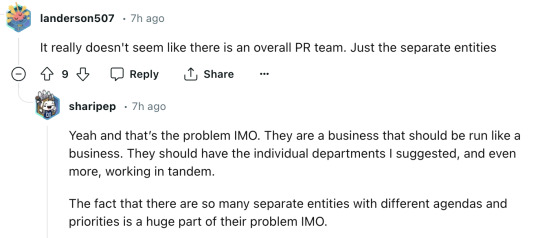
It really doesn't seem like there is an overall PR team. Just the separate entities
Yeah and that’s the problem IMO. They are a business that should be run like a business. They should have the individual departments I suggested, and even more, working in tandem.
The fact that there are so many separate entities with different agendas and priorities is a huge part of their problem IMO.

But Charles has been transparent for the most part!! And photographed repeatedly. It’s so bizarre when compared to KP, and feels passive aggressive to me to be honest lolol.

They’re really so so so bad at this 😭😭😭😭 but the British public and the media lets them get away with it 🙃🙃🙃

For heaven’s sake. If she’s recovering nicely, why resort to recycling old photos?

Other sources are making a pretty good case for the fact that it’s a November photo, taken after Catherine and the children visited the baby bank.

Does nobody, and I mean nobody, know how to do PR in that place anymore? Now it's pin all of this on just-recovering-from-abdominal-surgery Kate? Why not on William since they were so proud about how he was the one that took the photo? Somehow they keep making everything ten times worse.
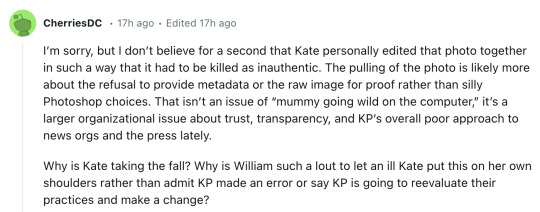
I’m sorry, but I don’t believe for a second that Kate personally edited that photo together in such a way that it had to be killed as inauthentic. The pulling of the photo is likely more about the refusal to provide metadata or the raw image for proof rather than silly Photoshop choices. That isn’t an issue of “mummy going wild on the computer,” it’s a larger organizational issue about trust, transparency, and KP’s overall poor approach to news orgs and the press lately.
Why is Kate taking the fall? Why is William such a lout to let an ill Kate put this on her own shoulders rather than admit KP made an error or say KP is going to reevaluate their practices and make a change?

Are college interns running Palace p.r.? Because I cannot understand how they're botching this so badly. If Kate couldn't/wouldn't pose for a legit photo, then just don't release anything. The Royals are basically dumping tankers of gas on the inferno by playing all these games.
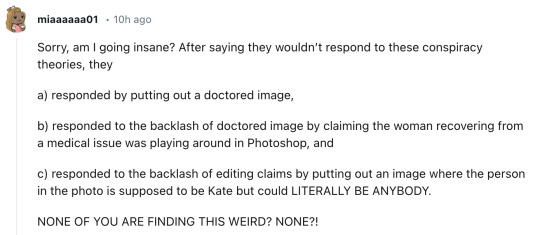
Sorry, am I going insane? After saying they wouldn’t respond to these conspiracy theories, they
a) responded by putting out a doctored image,
b) responded to the backlash of doctored image by claiming the woman recovering from a medical issue was playing around in Photoshop, and
c) responded to the backlash of editing claims by putting out an image where the person in the photo is supposed to be Kate but could LITERALLY BE ANYBODY.
NONE OF YOU ARE FINDING THIS WEIRD? NONE?!
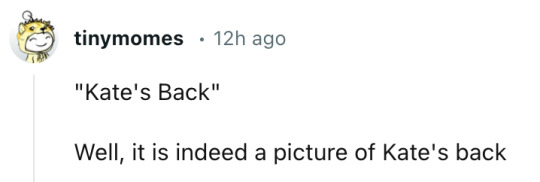
"Kate's Back"
Well, it is indeed a picture of Kate's back

Apparently the main symptom of her mysterious medical condition is that any photo with her in it immediately becomes grainy, blurry, or with people's wrists trying to escape into a fifth dimension.

Good Lord, I haven't followed a disaster story this closely since Oceangate Titan and this one may be even worse. The narrative is out of control and the rules have gone out the window.

They already lost control of the narrative at this point. No matter what they do now, they will be scrutinized more than they've ever been before. And they seem grossly unprepared for it.

She’s not even facing camera, how is this supposed to help? This just feeds the conspiracy theorists! headdesk

It's becoming a PR nightmare that only Olivia Pope can rescue.
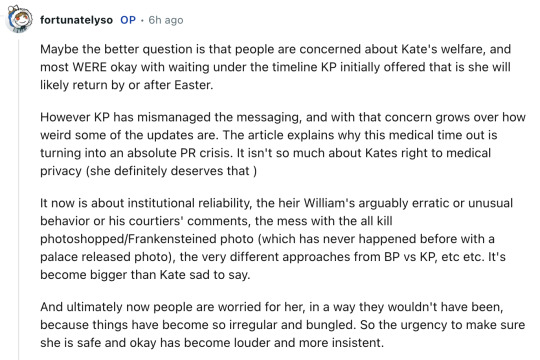
Maybe the better question is that people are concerned about Kate's welfare, and most WERE okay with waiting under the timeline KP initially offered that is she will likely return by or after Easter.
However KP has mismanaged the messaging, and with that concern grows over how weird some of the updates are. The article explains why this medical time out is turning into an absolute PR crisis. It isn't so much about Kates right to medical privacy (she definitely deserves that )
It now is about institutional reliability, the heir William's arguably erratic or unusual behavior or his courtiers' comments, the mess with the all kill photoshopped/Frankensteined photo (which has never happened before with a palace released photo), the very different approaches from BP vs KP, etc etc. It's become bigger than Kate sad to say.
And ultimately now people are worried for her, in a way they wouldn't have been, because things have become so irregular and bungled. So the urgency to make sure she is safe and okay has become louder and more insistent.
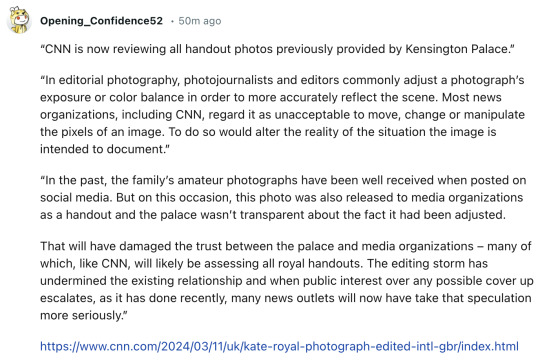
“CNN is now reviewing all handout photos previously provided by Kensington Palace.”
“In editorial photography, photojournalists and editors commonly adjust a photograph’s exposure or color balance in order to more accurately reflect the scene. Most news organizations, including CNN, regard it as unacceptable to move, change or manipulate the pixels of an image. To do so would alter the reality of the situation the image is intended to document.”
“In the past, the family’s amateur photographs have been well received when posted on social media. But on this occasion, this photo was also released to media organizations as a handout and the palace wasn’t transparent about the fact it had been adjusted.
That will have damaged the trust between the palace and media organizations – many of which, like CNN, will likely be assessing all royal handouts. The editing storm has undermined the existing relationship and when public interest over any possible cover up escalates, as it has done recently, many news outlets will now have take that speculation more seriously.”

#my gif#reddit#PR fail#fail!#kensington palace#palace officials#William The Prince of OWN GOALS#William The Weak#William The Terrible#prince william#William The Prince of Wales#scandal!#ESCANDALO!!!#kate middleton#Catherine The Princess of Wales#british royal family#fleet street#media
108 notes
·
View notes
Text
Access to Hillary Clinton's emails has taught me a couple things about being a politician:
Writing is important: Politicians write to each other very persuasive essays about policies they'd like to suggest. They also read articles to figure out what's happening nationally and internationally, which informs their policymaking.
They're people like you and me.
Professors in political and historical majors have a major persuasive power in politics: They act as advisors either directly or through written articles/books.
It is very important to read: As a politician, you need to be informed about public opinion, the happenings of your nation as well as international affairs. You also need to learn political strategy through historical accounts.
You must be humble to make change: In the words of Obama "we probably spent much more time trying to get the policy right than trying to get the politics right. There is probably a perverse pride in my administration — and I take responsibility for this; this was blowing from the top — that we were going to do the right thing, even if short-term it was unpopular. And I think anybody who's occupied this office has to remember that success is determined by an intersection in policy and politics and that you can't be neglecting of marketing and P.R. and public opinion."
https://wikileaks.org/clinton-emails/emailid/1395
(access to her emails are here-> https://wikileaks.org/clinton-emails/)
#writer blog#tumblr#bookblr#writeblr#poem#poetry#writers on tumblr#original poem#poems on tumblr#spilled ink#artists on tumblr#poems
2 notes
·
View notes
Text
Unity of Science Argument against the Proposition that Science is united by its Method and not by its Subject matter i. Introduction The intimate connection between scientific method and its original subject matter has been lost sight of, and the method has been regarded not as a tool, not as secondary to the demands of the subject of investigation, but as primary and self-sufficient. Moreover, scientific method is now considered as the unifying factor of all sciences rather than the subject matter of investigation. The focus of this paper is to invalidate the proposition that science is unified by its method and not by its subject matter. Our study includes discussions on the nature of science itself and analysis of the principle behind the methodological unity of science. ii. The Nature of Science Science as a rigorous and theoretically systematised experience of humanity, as a raw product of its culture, in the 20th century has been wielding an increasing influence on the development of man and society. “It is deductive as well as inductive”1. Science has a persistent but often understated influence on almost all facet of modern life. The influences are both from the technology that emanating from it and the deep philosophical inference coming from its ideas. However, regardless of this massive effect, only a minority of individuals have a basic perception on how the scientific activity operates2. “Science seeks explanations to satisfy the wonder”3. The dissimilarity between science and other enterprises that seen rationalization of why things are the way they are evident in the kind of paradigm that science itself established 1 Ritchie A.D., ‘Scientific Method: An Inquiry Into the Character and Validity of Natural Laws’, U.K.: Published by Routledge, 2001, p.1 2 McComas W. F., ‘The Nature of Science in Science Education: Rationales and Strategies’, Netherlands, Published by Springer, 1998, p. 3 3 Rosenberg A., ‘Philosophy of Science: A Contemporary Introduction’, U.K.: Published by Routledge, 2005, p.22 as an excellent and better explanation. “Science is practiced, as matter of circular definition, by scientist”4 and it is characterised by its selection of subject matter5. The philosophy of science is trying to unearth those norms and other systems guiding ‘scientific methods’ or the “logic of science”6 itself. The proficiency of science led to issues that science cannot possibly answer. Issues that needs skills that scientific training does not provide since there is no laboratory for exploring the nature theories and we certainly cannot determine the nature of ‘explanation’ by experiments7. To explain the relationship of disciplines that informs science education about the nature of science itself, the history and philosophy of science has been used. The nature of science is a complex productive field that combines characteristics of different social studies of science. These include history, sociology, and philosophy of science united with study from the cognitive sciences such as psychology and the like. The result is a rich description of the true nature of science and its functions, the behaviours of scientist as a social group and society’s response to scientific accomplishments. However, a great deal of incongruities remains regardless of momentous development in relation to exemplifying science. For instance, some asserted that no reliable and accurate explanation exists regarding the nature and structure of science. 4 Dear P.R., ‘The Intelligibility of Nature: How Science Makes Sense of the World’, U.S.: Published by University of Chicago Press, 2006, p.1 5 Cole S., ‘Making Science: Between Nature and Society’, U.S.: Published by Harvard University Press, 1992, p. 2 6 Gower B., ‘Scientific Method: An Historical and Philosophical Introduction’, U.K. Published by Routledge, 1997, p. 6 7 Smith W. N., ‘A Companion to the Philosophy of Science, U.K: Published by Blackwell Publishing, 2000, p. 7 Others pointed out the lack of concurrence concerning the correct image of scientific inquiry and the development of scientific knowledge. “The nature of science is neither universal nor stable”.8 iii. Philosophy of Science and Scientific Methodology A philosophy of science is growing increasingly essential for a number of reasons. Due to growing specialization and to the persistent and accelerated build up of new evidence, the general behaviour of scientific systems become increasingly lost to view and the amalgamation that relies on coexistence of diverse knowledge in a single mind becomes increasingly complex. As means to conquer this complexity, it is essential that occasionally, an expert competent of disengaging himself from details should explain the key points and fundamental structure of his science as it exists now. However,” it is not the results that interest a man but the method used”.9 In our time, philosophy of science is progressively more familiar in investigating the increasing role of scientific and technical advancement in the life of man and society Read the full article
0 notes
Text
Mental Health Service Reimbursement How have changes in reimbursement and medications been a major driver in these policy and treatment changes? As a Chief Nursing Officer, one must be at once informed of the practical, day-to-day challenges of nursing in the field and of the administrative realities shaping the occupation. With respect to the latter, it is important to understand the implications of insurance, Medicare and coverage terms and conditions. These frequently complex terms will have a direct impact on the experience of providing treatment. This is well demonstrated in a discussion on coverage vagaries relating to mental health treatment reimbursement. Especially with so many changes now taking place in the healthcare field, there is practical value in understanding the emergent conditions of mental health coverage. The most immediate and impactful change in mental health coverage relates to the historical limitations placed on the scope of treatment reimbursement. Insurance companies first and, consequently, Medicare and Medicaid, placed caps on the amount of coverage that could be received for extended treatment on individual conditions This model persisted well into the 1990s and was an extension of the fee for service approach driving the healthcare reimbursement system on the whole. (Williams & Torrens, p. 9) A troubling consequence of this system was the burden placed on individual system users, who would be required to pay high deductibles, co-payments and other cost-containment-based fees. A major transition would come with the adoption of managed healthcare, where more individualized plans would allow for a broader array of coverage options for patients. For those of us in the nursing profession, this change would result in a great deal more latitude in prescribing mental health treatment options. This is because the managed care approach relies on an interconnected network of healthcare providers and services. This allows us to refer patients to a host of post-discharge treatment options, whether working in an inpatient or outpatient treatment setting. With respect to the former, managed care would promote the value of connecting with service providers external to the immediate healthcare facility. The use of referrals would drive the designation of services for which reimbursement could be gained. Under the terms of Medicare, coverage limits for the mental health are largely determined by the plan that one carries. For instance, with Medicare Part A, limitation to coverage will be at least partially dependent on nature of the facility in question. If one is admitted for hospital service relating to depression, Medicare will cover all aspects of the hospitalization without limitation. By contrast, if one is admitted to a psychiatric facility, Part A covers treatment only up to 190 for inpatient treatment. (CMS, p. 1) Such complexities are actually being gradually diminished though with the emergence of Bundled coverage options. This strategy will ultimately help to fold mental health service coverage into a more malleable way of requesting coverage. Here, a lump sum will be provided for coverage of an individual health plan with sums distributed to treatment providers as called for. The inclusion of mental health treatment in this strategy offers exciting opportunities for reducing the tendency toward insurance company or Medicare cost containment that costs so many enrollees the coverage they deserve. Works Cited: Centers for Medicare & Medicaid Services (CMS). (2013). Medicare and Your Mental Health Benefits. Medicare.gov. Geriatric Mental Health Foundation (GMHF). (2012). Paying for Mental Health Services Under Medicare. GMHFonline.org. Williams, S.J. & Torrens, P.R. (2007). Introduction to Health Services. Cengage Learning. https://www.paperdue.com/customer/paper/mental-health-reimbursement-and-med-changes-125095#:~:text=Logout-,MentalHealthReimbursementandMedChanges,-Length2pages Read the full article
0 notes
Text
Orientalism in Alternative Medicine
Ayurveda
"The branding of ayurveda as a market strategy for the health consumer has become an important factor in the creation of ‘New Age orientalist desire’. Using Vedic Village as a case, this paper shows how new age orientalism has been spread in modern India to middle class professionals, entrepreneurs and overseas health tourists. With this representation, ayurveda has become a wellness therapy instead of a means to restore health, and affluent people can now buy a package of ‘ayurvedic healthy life’ without changing their lifestyles. In addition to Euro–American health tourists, emerging middle class professionals and entrepreneurs in modern India have also become an integral part of the process of ‘new age orientalization’. This paper concludes that the commodified version of ayurveda, which has been developed in the West as part of ‘wellness and spa culture’, has become popular among the affluent middle class in India and abroad today, and through this the West has claimed and justifies authority over Eastern medicine." Islam, N. (2012). New age orientalism: Ayurvedic ‘wellness and spa culture’. Health Sociology Review, 21, 220 - 231.
TCM
"Chinese medicine came to Canada during the twentieth century in the hands of ethnic Chinese immigrants. This paper investigates the key features of professionalized Chinese medicine practice in the city of Vancouver, which lies in the Canadian province of British Columbia. The methodology adopted for this research involved face-to-face interviews with practitioners and the scrutinizing of webpages of various institutes and clinics offering Chinese medical services. In order to comply with regulatory requirements, the practice of Chinese medicine has been professionalized according to western biomedicine, ignoring the historical development and cultural connotations of this ancient system of health and wellness. Many practitioners in Vancouver do not speak Chinese, share Chinese culture, and have never been to China. The education and service delivery under Chinese medicine specialties have focused exclusively on curative care and have disregarded the preventive and moral regimen. A consumer class has developed across the city and the holistic content of Chinese medicine has become a selling point. This paper concludes that the commodified version of Chinese medicine that has so far been developed in Vancouver as part of its professionalization echoes neo-orientalism. The West has intervened in the formalization process of Chinese medicine practice, justifying authority through the process of non-disputed inclusion. This is, however, an ahistorical proponent fulfilling new age desires and contaminating eastern healing in the west for profit maximization." Islam, M.N. Professionalization of Chinese medicine practice in Canada: from medical pluralism to neo-orientalism. Soc Theory Health 21, 228–246 (2023). https://doi.org/10.1057/s41285-022-00191-7
The Western Medicine (WM) and Traditional Chinese Medicine (TCM) are commonly integrated in the contemporary practice of medicine in China. About 90% of the general hospitals and 75% of health centers have TCM departments. TCM is a holistic medicine that has been practiced for 5,000 years, and it is still popular in China and the world. TCM is based on the concept of maintaining the balance of 2 forces within the body called Yin and Yang. They manifest themselves in the 5 elements: fire, water, metal, wood, and earth. Before the founding of the P.R. China in 1949, there were no established TCM hospitals, but only private pharmacies operated by TCM doctors. To protect TCM as a national treasure of China and provide affordable medical services, the central government initiated a TCM hospital system since 1954. Since then, TCM hospitals in China have remained committed to not only medical care but also the social and historic cause of reviving TCM as an important part of Chinese cultural heritage. 93.9% TCM hospitals were set up after the Reform and Opening-up Policy of China. Integration of TCM and WM in Hong Kong provides a valuable reference for the development of integrative medicine in the world. Zhou, H. (2021). The Evolution and Role of Traditional Chinese Medicine (TCM) in Healthcare System and Integrated Medicine in China. In: Islam, M.N. (eds) Chinese Medicine and Transnational Transition during the Modern Era. Palgrave Macmillan, Singapore. https://doi.org/10.1007/978-981-15-9949-1_3
0 notes
Text
‘We Can Bury Anyone’:

Inside a Hollywood Smear Machine
Private messages detail an alleged campaign to tarnish Blake Lively after she accused Justin Baldoni of misconduct on the set of “It Ends With Us.”
If you've been keeping up with all the drama between Blake Lively and Justin Baldoni, you might have read this line from Lively's lawyers: "This is an age-old story: A woman speaks up with concrete evidence of sexual harassment and retaliation, and the abuser attempts to turn the tables on the victim. This is what experts call DARVO: Deny. Attack. Reverse Victim Offender."
Last summer, as the release of “It Ends With Us” approached, Justin Baldoni, the director and a star of the film, and Jamey Heath, the lead producer, hired a crisis public relations expert.
During shooting, Blake Lively, the co-star, had complained that the men had repeatedly violated physical boundaries and made sexual and other inappropriate comments to her.
Their studio, Wayfarer, agreed to provide a full-time intimacy coordinator, bring in an outside producer and put other safeguards on set.
In a side letter to Ms. Lively’s contract, signed by Mr. Heath, the studio also agreed not to retaliate against the actress.
But by August, the two men, who had positioned themselves as feminist allies in the #MeToo era, expressed fears that her allegations would become public and taint them, according to a legal complaint that she filed Friday.
It claims that their P.R. effort had an explicit goal: to harm Ms. Lively’s reputation instead.
Her filing includes excerpts from thousands of pages of text messages and emails that she obtained through a subpoena.
These and other documents were reviewed by The New York Times.
There have long been figures behind the scenes shaping public opinion about celebrities — through gossip columns, tabloids and strategic interviews.
The documents show an additional playbook for waging a largely undetectable smear campaign in the digital era.
While the film, about domestic violence, was a box office hit — making nearly $350 million worldwide — online criticism of the actress skyrocketed.
“He wants to feel like she can be buried,” a publicist working with the studio and Mr. Baldoni wrote in an Aug. 2 message to the crisis management expert, Melissa Nathan.

“You know we can bury anyone,” Ms. Nathan wrote.
In the following weeks, Ms. Nathan, whose clients have included Johnny Depp and the rappers Drake and Travis Scott, went hard at the press, pushing to prevent stories about Mr. Baldoni’s behavior and reinforce negative ones about Ms. Lively, the text messages show.
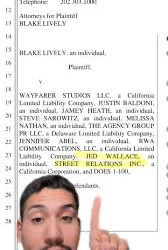
Jed Wallace, a self-described “hired gun,” led a digital strategy that included boosting social media posts that could help their cause.'
An attorney for Wayfarer said in a statement to The Times that the studio, its executives and public relations representatives “did nothing proactive nor retaliated” against Ms. Lively, and accused the actress of “another desperate attempt to ‘fix’ her negative reputation.”
“These claims are completely false, outrageous and intentionally salacious with an intent to publicly hurt and rehash a narrative in the media," the lawyer, Bryan Freedman, wrote.
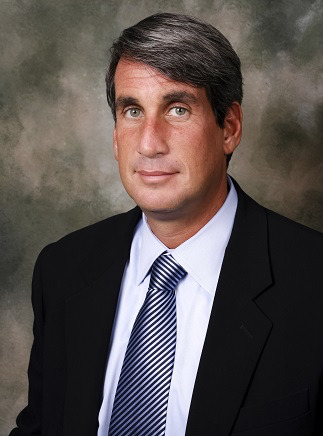
Mr. Freedman did not address her allegations about misconduct during the filming by Mr. Baldoni and Mr. Heath.
He alleged that Ms. Lively planted “negative and completely fabricated and false stories with media” about Mr. Baldoni, which he said “was another reason why Wayfarer Studios made the decision to hire a crisis professional.”
The effort to tarnish Ms. Lively appears to have paid off.
Within days of the film’s release, the negative media coverage and commentary became an unusually high percentage of her online presence, according to a forensic review she sought from a brand marketing consultant.
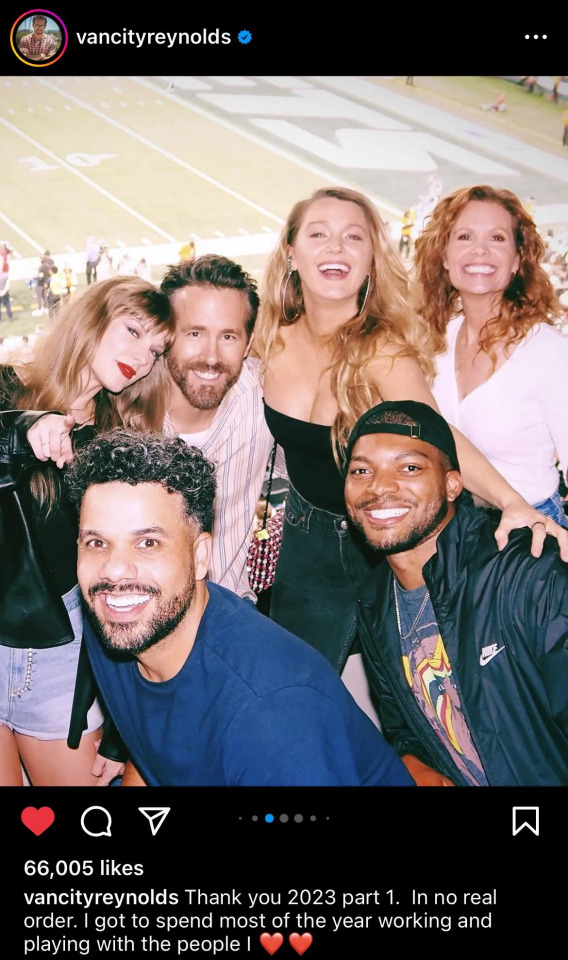
Ms. Lively — who is married to the actor and entrepreneur Ryan Reynolds of “Deadpool” fame, and is close with Taylor Swift — experienced the biggest reputational hit of her career.
She was branded tone-deaf, difficult to work with, a bully.
Sales of her new hair-care line plummeted.
“Is Blake Lively set to be CANCELLED?” read a Daily Mail headline one week into the attacks.
Mr. Baldoni, by contrast, emerged largely unscathed.
This month, he was honored at a star-studded event celebrating men who “elevate women, combat gender-based violence and promote gender equality worldwide.”
On Saturday, however, after this article was published, the talent agency William Morris Endeavor stopped representing Mr. Baldoni, said Ari Emanuel, chief executive of Endeavor, the agency’s parent company.
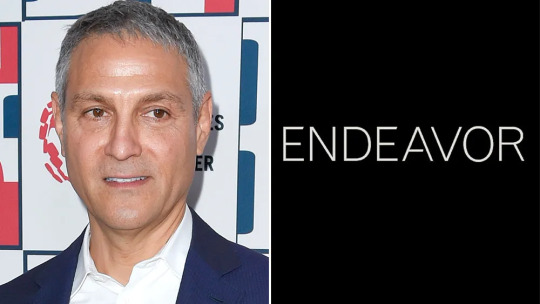
Justin Baldoni received an award this month for being an ally to women.
A legal filing has since accused him of harassment and retaliation against the actress Blake Lively.
Ms. Lively’s complaint — against Mr. Baldoni; Mr. Heath; Wayfarer; Steve Sarowitz, a co-founder of the studio; Mr. Wallace; Ms. Nathan; and Jennifer Abel, another public relations executive involved in the campaign — alleges sexual harassment and retaliation, among other claims.
The complaint, filed with the California Civil Rights Department, is a precursor to a lawsuit.
In a statement, Ms. Lively said, “I hope that my legal action helps pull back the curtain on these sinister retaliatory tactics to harm people who speak up about misconduct and helps protect others who may be targeted.”
She also denied that she or any of her representatives planted or spread negative information about Mr. Baldoni or Wayfarer.
‘WE SHOULD HAVE A PLAN’
In May, several months after the filming wrapped, Mr. Baldoni realized that Mr. Reynolds had blocked him on Instagram.
“We should have a plan for IF she does the same when movie comes out,” Mr. Baldoni wrote of Ms. Lively in a text exchange that included Ms. Abel, a publicist who has long worked with him and Wayfarer.
“Plans make me feel more at ease.”
Mr. Baldoni, 40, and Mr. Heath, 55, had a lot riding on the film, which is based on a best-selling novel by Colleen Hoover.
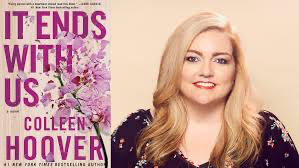
Mr. Baldoni was best known for the CW satirical romantic dramedy “Jane the Virgin.”
youtube
Wayfarer provided the resources for bigger ambitions.
It was bankrolled by the billionaire Steve Sarowitz, who is co-chair of the studio with Mr. Baldoni.
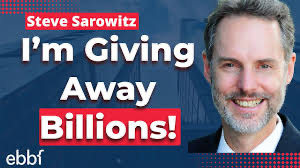
They and Mr. Heath, the chief executive, are all deeply involved with the Baha’i religious organization, which promotes unity, peace and gender equality.
Mr. Baldoni has presented himself as an ally to women, writing books, co-hosting a podcast with Mr. Heath and giving talks on toxic masculinity.
Ms. Lively, 37, was by far the bigger star.
The TV show “Gossip Girl” catapulted her to early fame, and she appeared in films ranging from “The Sisterhood of the Traveling Pants” to “The Town.”
She built businesses outside the entertainment industry, appeared on the covers of glossy magazines and amassed more than 45 million Instagram followers.
Ms. Lively had expressed concerns about Mr. Baldoni from the beginning, according to her legal complaint.
Before shooting began, for example, she objected to sex scenes he wanted to add that she considered gratuitous.
In November 2023, as the cast of “It Ends With Us” was preparing to resume shooting after a monthslong writers’ strike, Ms. Lively went to Wayfarer with the side letter seeking safeguards.
“Our client is willing to forego a more formal HR process in favor of everyone returning to work and finishing the Film as long as the set is safe moving forward,” her legal team wrote to the studio.
She detailed her complaints during a meeting with Mr. Baldoni, Mr. Heath and other producers in January, according to the legal filing.
She claimed Mr. Baldoni had improvised unwanted kissing and discussed his sex life, including encounters in which he said he may not have received consent.
Mr. Heath had shown her a video of his wife naked, she said, and he had watched Ms. Lively in her trailer when she was topless and having body makeup removed, despite her asking him to look away.
She said that both men repeatedly entered her makeup trailer uninvited while she was undressed, including when she was breastfeeding.
In agreeing to the terms that Ms. Lively sought, Wayfarer acknowledged that “Although our perspective differs in many aspects, ensuring a safe environment for all is paramount,” according to her legal complaint.
By the spring, Ms. Lively told people she worked with that the men’s behavior had improved with the new protections.
But she was now in a creative battle with them.
With the support of Sony, the film’s distributor, she made her own cut of the movie, bringing in editors and a composer and adding one of Ms. Swift’s songs.
In the end, Sony and Wayfarer went with Ms. Lively’s cut, and she got a producer credit.
As the film release neared, Ms. Lively and other cast members informed Sony and Wayfarer that they would not do any appearances alongside Mr. Baldoni.
So did Ms. Hoover, the author, who had her own dissatisfactions with him and had become more upset after he told her about Ms. Lively’s allegations, according to text messages from Mr. Baldoni and Mr. Heath.
‘MOST IMPORTANTLY UNTRACEABLE’
By the first week of August, Wayfarer and Mr. Baldoni had retained Ms. Nathan, who had worked with high-profile clients including Mr. Depp, whose ex-wife, Amber Heard, accused him of physical abuse.
Mr. Depp successfully sued Ms. Heard for defamation, and the trial became a spectacle amid suspicions of an online campaign to damage her credibility.
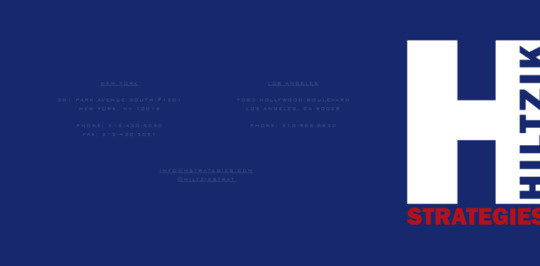
This year, after a decade at the New York consultancy Hiltzik Strategies, Ms. Nathan started her own firm, TAG PR.
Its majority stakeholder is a company run by the entertainment industry executive Scooter Braun.
In an initial planning document sent to Wayfarer and Mr. Baldoni on Aug. 2, Ms. Nathan suggested media talking points, including that Ms. Lively used an imbalance of power to take creative control of the film.
But Mr. Baldoni wanted more.
“Not in love with the document they sent,” he responded in a text exchange that included Ms. Abel and Mr. Heath.
“Not sure I’m feeling the protection I felt on the call.”
Ms. Abel relayed his frustration to Ms. Nathan:
“I think you guys need to be tough and show the strength of what you guys can do in these scenarios. He wants to feel like she can be buried.”
“Of course- but you know when we send over documents we can’t send over the work we will or could do because that could get us in a lot of trouble,” Ms. Nathan responded, adding, “We can’t write we will destroy her.”
Moments later, she said, “Imagine if a document saying all the things that he wants ends up in the wrong hands.”
“You know we can bury anyone,” she wrote.
Three days later, Mr. Baldoni texted Ms. Abel, flagging a social media thread that accused another celebrity of bullying behavior and had generated 19 million views.
“This is what we would need,” he wrote.
Ms. Nathan soon floated proposals to hire contractors to dominate social media through “full social account take downs,” by starting “threads of theories” and generally working to “change narrative.”
“All of this will be most importantly untraceable,” she wrote.
JENNIFER ABEL
I think we need to put the social combat plan into motion
MELISSA NATHAN
So do I
Within days, the group was working with Mr. Wallace, whose company, Street Relations, offers services ranging from public relations to more opaque crisis management.
He is a somewhat enigmatic figure with very little digital trail.
But court records show that his clients have included Paramount Pictures and the YouTube personality Adin Ross.

And in a since-deleted LinkedIn profile, Mr. Wallace described himself as “a hired gun” with a “proprietary formula for defining artists and trends.”
‘THAT’S WHY YOU HIRED ME’
The Aug. 6 premiere brought the first wave of press coverage questioning what had happened during the filming.
A Hollywood Reporter story speculated about a rift between Ms Lively and Mr. Baldoni, after TikTokers noticed that the two stars didn’t pose for photographs together and that Ms. Lively and other cast members didn’t follow Mr. Baldoni on Instagram.
JUSTIN BALDONI
The unfollow situation is what everyone is pointing at.
Seemingly that something is much bigger under the surface - as why would they all unfollow
TAG PR EXECUTIVE Weve flagged to Jed and his team as well
Ms. Nathan had already been speaking to other journalists, according to text messages.
When Ms. Abel wrote to her Aug. 4 that “I’m having reckless thoughts of wanting to plant pieces this week of how horrible Blake is to work with. Just to get ahead of it,” Ms. Nathan replied that she had spoken off the record to an editor at The Daily Mail.
“She’s ready when we are,” Ms. Nathan wrote.
A flurry of articles followed the Hollywood Reporter piece.
Many made it seem as if the only rift was over creative control.
Some journalists had gotten wind of complaints about Mr. Baldoni’s behavior, but none of the most serious ones were published.
“He doesn’t realise how lucky he is right now,” Ms. Nathan texted Ms. Abel.
In other exchanges, Ms. Nathan claimed that she had kept allegations against him out of stories, writing in one message that major news outlets were “standing down on HR complaint.”
JENNIFER So are we in the clear now?! Did we survive
MELISSA We survived ALL Press is so overwhelming Weve confused people So much mixed messaging It’s actually really funny if you think about it
Messages have been edited for length.
Meanwhile, an online backlash against Ms. Lively was underway.
It is impossible to know how much of the negative publicity was seeded by Ms. Nathan, Mr. Wallace and their team, and how much they noticed and amplified.
On Aug. 10, Kjersti Flaa, a Norwegian entertainment reporter, uploaded to YouTube a 2016 interview in which Ms. Lively snapped back when Ms. Flaa commented on her baby “bump” and remained testy for the rest of the conversation.
youtube
Ms. Flaa titled it “The Blake Lively interview that made me want to quit my job,” and told The Daily Mail that “it’s time that people behaving badly in Hollywood, or anywhere else for that matter, gets called out for it.”
After publication of this article, Ms. Flaa on Sunday contacted The Times and said she had not participated in any orchestrated effort to harm Ms. Lively’s reputation.
In an email, she said that she had resurfaced the 2016 interview independently this past August.
“It was neither coordinated nor influenced by anyone associated with the alleged campaign,” she wrote.
It wasn’t the first time she had posted a video aligned with a client of Ms. Nathan.
In 2022, in the midst of Mr. Depp’s legal battle with Ms. Heard, Ms. Flaa posted clips of her interviews with the actor, tagged #JusticeForJohnnyDepp.
During the film rollout, Ms. Lively was also accused of being insensitive about domestic violence.
The official promotion plan instructed the cast to focus more on the uplifting aspects of the movie than on abuse, and to embrace a floral theme (her character has a flower shop).
In several appearances, she never made reference to domestic violence at all.

And she faced criticism when her Betty Booze beverage company was promoting the film, given the role alcohol can play in abusive relationships.
Seeing that blowback, the text messages show, Mr. Baldoni and his P.R. team decided instead to highlight survivors of domestic violence in his interviews and social media.
More criticism came when Ms. Lively said in an interview that Mr. Reynolds, who had no role in the film, had helped rewrite a scene, prompting snarky comments about the actress leaning on her husband and speculation that he had violated the writers strike.
It is unclear exactly how Mr. Wallace operated.
There are references in emails to “social manipulation” and “proactive fan posting,” and text messages cite efforts to “boost” and “amplify” online content that was favorable to Mr. Baldoni or critical of Ms. Lively.
We are crushing it on Reddit,” Mr. Wallace told Ms. Nathan, according to a text she sent Ms. Abel on Aug. 9.
The next day, one of Ms. Nathan’s employees texted, “We’ve started to see shift on social, due largely to Jed and his team’s efforts to shift the narrative.”
Ms. Nathan wrote to Ms. Abel:
“And socials are really really ramping up. In his favour, she must be furious. It’s actually sad because it just shows you have people really want to hate on women.”
When a TikTok sleuth started asking questions about Mr. Baldoni, Ms. Abel texted that “this girl is on a very dangerous crusade.”
“We’ve flagged to Jed and his team for more serious action on the social side,” she wrote.
Throughout the text exchanges, Mr. Baldoni encourages the P.R. team, sometimes flagging social media posts for them to use.
On Aug. 15, he proposes “flipping the narrative” on a positive story about Ms. Lively and her husband by “using their own words against them.”
Other times he appears to vacillate, seeking assurances about the tactics being deployed.
When he notices a tabloid article critical of Ms. Lively, he sends a worried text:
“How can we say somehow that we are not doing any of this — it looks like we are trying to take her down.”
On another occasion, he wondered whether they were deploying fake “bot” accounts on social media.
“I can fully fully confirm we do not have bots,” Ms. Nathan wrote, adding that any digital team would be too intelligent to “utilise something so obvious.”
Mr. Wallace’s operation, she wrote, “is doing something very specific in terms of what they do. I know Jamey & Jed connected on this.”
Mr. Baldoni, Ms. Nathan and others on the team claimed in their text exchanges that Ms. Lively was using her own public relations team to create bad press about Mr. Baldoni but cited no evidence to support those claims.
By mid-August, the team was reveling in the damage to Ms. Lively’s image.
JENNIFER ABEL The narrative online is so freaking good and fans are still sticking up for Justin and there literally has been no pickup of those two articles which is actually shocking to me. But I see this as a total success, as does Justin. You did such amazing work
MELISSA NATHAN Narrative is CRAZY good So did you. The majority of socials are so pro Justin and I don’t even agree with half of them lol Messages have been edited for length.
On Aug. 16, Ms. Nathan shared the Daily Mail article headlined “Is Blake Lively set to be CANCELLED?” with references to ‘hard to watch’ videos and a ‘tone deaf’ promotional Q. and A.
“Wow. You really outdid yourself with this piece,” Ms. Abel responded.
“That’s why you hired me right?” Ms. Nathan replied. “I’m the best.”
‘WE MEN HAVE TO STEP UP’
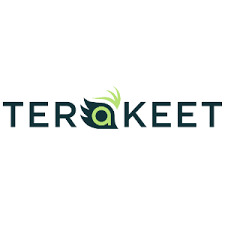
A brand marketing consultant, Terakeet, produced a report in August for Ms. Lively that concluded she had likely been the object of a “targeted, multichannel online attack” similar to one against Ms. Heard, and that it was damaging her reputation.
The report did not identify who was behind the attack.
But by analyzing “the entirety of Google’s search index” for Ms. Lively’s name, it found that 35 percent of the results also included a reference to Mr. Baldoni.
This was highly unusual given the length of her career, the company said, and suggested that the media environment was being manipulated.

A separate report, by Ms. Lively’s hair-care company, Blake Brown, concluded that the social media onslaught also had a negative effect on that business.
Her product line, which had launched in August with record-breaking sales, estimates that it lost as much as 78 percent in sales.
With the recent arrival of “It Ends With Us” on Netflix, Mr. Baldoni has begun another round of promotion and messaging.
In an interview on “Access Hollywood,” he said “there is never an excuse” to “hurt a woman, physically or emotionally.”
He added, “We men have to step up and figure out how we can be better allies.”
0 notes
Text
Critical Analysis
Negrão, J.G., Bazán, P.R., de Azevedo Neto, R.M., Lacerda, S.S., Ekman, E. and Kozasa, E.H. (2022). Baseline emotional state influences on the response to animated short films: A randomized online experiment. Frontiers in Psychology, 13. doi:https://doi.org/10.3389/fpsyg.2022.1009429.ù
Our emotional states can change over time based on the media we consume daily, although what is interesting is how it happens in practicality. Animated short films are typical impulses, however, it is unknown how they affect the state of mind of the audience. The study analyzed today delves into the exploration of the changes happening in the mental states of the participants according to the tone, negative or positive, of the film they watched. The research also focuses on data such as emotional baseline and potential change in the main emotion, all based on an Emotional Intensity scale. One of the goals of the report is to understand whether sociodemographic characteristics associated with the applicants could influence the overall response concerning the movie. Another reason that makes the study even more unique, is the historical period in which it was conducted: the COVID-19 global pandemic. During such a time, emotions could be intensified and altered due to social distancing and increased rate of anxiety levels, therefore turning the case study into something quite exceptional.
For this article, I will be examining pages 9 and 10 of the text, because they reflect a deeper analysis of the negative states of mind resulting from the study and focus on the effects given by the moment of relaxation proposed by the experiment right after the vision of the short film.
The interesting mix of nationalities contributing to the creation of the case study brings together expertise from both Brazilian and American institutions. Both Juliana Negrão, Paulo Bazán, Raymundo de Azevedo, Shirley Lacerda, and Elisa Kozasa are affiliated with Hospital Israelita Albert Einstein in São Paulo and work in the psychological and emotional health environment. On the other hand, Eve Ekman is associated with the Greater Good Science Center at the University of California and specializes in emotion regulation and mindfulness.
Some of the key points brought by the experts are related to the impact that external stimuli have on our perception of events and general well-being. Negative emotions usually tend to have more weight on our overall vision and last longer, however, mental states can change quite rapidly based on external factors. Even though what happens on the outside has a huge impact on us, our current emotional state can also divert how we are going to evaluate situations. Other parameters that the experts took into account were gender, age, level of education, social occupation, and the use of specific medicines or the presence of psychiatric issues, which could have influenced the participant’s emotional variations.
The authors choose to prove their arguments by presenting the effects of either positive or negative content and the eventual relaxation proposed after the experiment. The study confirms that it is much more difficult for an emotional control strategy to work on an individual who already started the experiment in a negative state of mind, rather than on a happier person. The experts continue by reserving a small section of the analysis to the commentary on the consequences of depression or anxiety during the experiment, resulting as well in a more negative perception of the experience. Concerning this topic, the article introduces a more specific terminology talking about a phenomenon called the refractory period: state of mind which makes it hard for the person experiencing it to switch to an emotional state opposite of what they are feeling. This specific section is quite easy to follow, because of the formal but very easy language used. Moreover, the authors continue the explanations of their findings with an ultimate comparison between the initial main emotion valences, the way they changed throughout the study, and the sociodemographic information of the applicants. The results showed a higher emotional control and positive effect among the elderly candidates, as well as among people who didn’t declare any usage of psychiatric medications. A new and unexpected element of the study is brought by the relaxation audio proposed by the experts immediately after the viewing of the short movie. The authors explain that the addition was meant to minimize the negative effects created by the more negative animated films, however, all of the participants benefited from this final component.
Although the case study was brilliantly conducted, I noticed some inaccuracies I would have tried to avoid while reading the report. Towards the conclusion, the text says: “... the participants’ perception of the film was not directly assessed, and participants could have interpreted or perceived the film in ways different from the expected positive or negative valences …”. I understand the aim of the study is to assess changes in emotional perception among positive or negative animated movies only. However, I believe that the case study could have appeared more complete if other emotions were also considered.
Nonetheless, throughout the article, multiple writers made their arguments based on specific data conducted through a complex and complete survey based on emotional responses, percentages, and statistics. I think both the writing and the visual schemes were accessible enough for a large amount of the audience. The authors introduced the topics and made their arguments on clear data and a quite neutral and flowing use of the language. Finally, as both an animator and a daily media consumer, I believe that this research made me realize how oblivious I am about the power of multimedia content and the effects that it has on me and my emotional state. Moreover, the article made me realize how much unawareness there is towards our own emotions, and how easily manipulated we are in that sense. The fact that negative mindsets are harder to get rid of and the ignorance that still revolves around mental illnesses about this matter is something to take into consideration. I think this text is incredibly effective because it brings together highly relevant topics: psychology, neuroscience, and media studies. Moreover, the presence of animated movies as a case study is a popular and relatable medium that adds practical and cultural significance to the study.
After analyzing this article, a major conclusion that can apply to my work is that nothing is innocent and that everything has an effect on us, even if media strategies try to hide it. Therefore, this made me realize how much influence my work can have on people and how conscious I need to be.
0 notes
Note
Hi. I'm the anon that said I was going to send you the full article. For some reason my phone is not doing ss so I will do copy paste to send you. The article is long so I will split it in 3 parts. i will write nyt anon 2 and nyt anon 3 at the beginning of the other 2 asks. Here it goes the first part:
We Can Bury Anyone’: Inside a Hollywood Smear Machine Private messages detail an alleged campaign to smear Blake Lively after she accused Justin Baldoni of misconduct on the set of “It Ends With Us.” Last summer, as the release of “It Ends With Us” approached, Justin Baldoni, the director and a star of the film, and Jamey Heath, the lead producer, hired a crisis public relations expert. During shooting, Blake Lively, the co-star, had complained that the men had repeatedly violated physical boundaries and made sexual and other inappropriate comments to her. Their studio, Wayfarer, agreed to provide a full-time intimacy coordinator, bring in an outside producer and put other safeguards on set. In a side letter to Ms. Lively’s contract, signed by Mr. Heath, the studio also agreed not to retaliate against the actress. But by August, the two men, who had positioned themselves as feminist allies in the #MeToo era, expressed fears that her allegations would become public and taint them, according to a legal complaint that she filed Friday. It claims that their P.R. effort had an explicit goal: to harm Ms. Lively’s reputation instead. Her filing includes excerpts from thousands of pages of text messages and emails that she obtained through a subpoena. These and other documents were reviewed by The New York Times. There have long been figures behind the scenes shaping public opinion about celebrities — through gossip columns, tabloids and strategic interviews. The documents show an additional playbook for waging a largely undetectable smear campaign in the digital era. While the film, about domestic violence, was a box office hit — making nearly $350 million worldwide — online criticism of the actress skyrocketed. "He wants to feel like she can be buried,” a publicist working with the studio and Mr. Baldoni wrote in an Aug. 2 message to the crisis management expert, Melissa Nathan. “You know we can bury anyone,” Ms. Nathan wrote. In the following weeks, Ms. Nathan, whose clients have included Johnny Depp and the rappers Drake and Travis Scott, went hard at the press, pushing to prevent stories about Mr. Baldoni’s behavior and reinforce negative ones about Ms. Lively, the text messages show. Jed Wallace, a self-described “hired gun,” led a digital strategy that included boosting social media posts that could help their cause. An attorney for Wayfarer said in a statement to The Times that the studio, its executives and public relations representatives “did nothing proactive nor retaliated” against Ms. Lively, and accused the actress of “another desperate attempt to ‘fix’ her negative reputation.” “These claims are completely false, outrageous and intentionally salacious with an intent to publicly hurt and rehash a narrative in the media," the lawyer, Bryan Freedman, wrote. Mr. Freedman did not address her allegations about misconduct during the filming by Mr. Baldoni and Mr. Heath. He alleged that Ms. Lively planted “negative and completely fabricated and false stories with media” about Mr. Baldoni, which he said “was another reason why Wayfarer Studios made the decision to hire a crisis professional.”
Thank you! I appreciate this
0 notes
Text
Brand and Technology-Centric Fractional CMO Services for a Real Estate Crowdfunding Platform

About the Project:
Customer
Property Investment Crowdfunding Platform
Industry
PropTech
Opportunity
Collaborate with founding teams and agencies to craft a dynamic, tech-driven brand identity. Provide strategic guidance on the mobile app's UI and UX. Identify and vet marketing and technology vendors to enable brand launch.
Solutions
Brand Strategy Consulting
Brand Identity
Brand Purpose
Buyer Persona
Brand Assets
Evaluation and Selection of Marketing Technology Vendors
Evaluating P.R. Agencies
Selection of CRM and Marketing Technology Platforms
Results
Modern fintech focused brand identity created targeting new age investors.
Mobile app and technology platforms have been successfully completed in collaboration with our selected tech partner and agency.
Cross Channel customer engagement & retention platform selected to power customer communications.
The primary brief was to establish and position the company as a tech-driven, modern investment platform tailored for new-age customers. The goal was to create a unique brand identity that stands apart from traditional players such as real estate developers and financial institutions.
Company Background
The company - a fintech platform designed for modern investors, enabling fractionalized real estate investments and making property ownership accessible to those traditionally excluded from real estate opportunities. With a mobile app at its core, the platform carefully vets and lists international properties, offering global investors the opportunity to invest seamlessly. It also manages all operational tasks of renting, purchase and sale thus, providing a hassle-free investment experience.
Key Brief
The primary brief was to establish and position the brand as a tech-driven, modern investment platform tailored for new-age customers. The goal was to create a unique brand identity that stands apart from traditional players such as real estate developers and financial institutions. The company sought to avoid being perceived as a property listing platform but a cutting-edge 'Fintech App' enabling fractionalized real estate investments.
Work Area
The Branding Exercise
The fractional CMO began by immersing in the founders' vision, engaging in focused discussions to uncover the brand's purpose, target audience profile, value proposition, and key attributes of the brand, the team aspired to reflect. This groundwork culminated in the creation of a comprehensive 'brand brief' document, encapsulating the essence of these discovery sessions. The document served as a foundation for initiating the evaluation process to identify the ideal brand agency.
The fractional chief marketing officer held strategic meetings with branding agencies to clearly outline project expectations, deliverables, and objectives. Leading all discussions and pitch presentations, the CMO finalised a shortlist of agencies.
The engagement progressed to kick-off sessions with the selected agency, culminating in the development of essential brand deliverables, including brand identity assets, brand personality definition, voice, tone, tagline, website launch, and activation of social media properties.
Acting as a liaison between the agency and the founding team, the CMO ensured seamless communication and alignment, enabling the smooth and timely completion of the project.

The Technology Evaluation
Part of the fractional CMO services included the evaluation and selection of critical tech vendors and platforms. This included UI/UX design partners, CRM systems, customer service tools, and the web development technology stack. Leveraging a strong background in technology, the fractional CMO ensured that the selected solutions aligned with the brand’s vision and operational needs.
P.R. and Marketing Budget
A key component of the CMO's mandate was the identification and shortlisting of P.R. professionals and agencies with a global footprint. These agencies were tasked with:
Introducing the brand to prominent media outlets.
Positioning the founders as thought leaders in the fintech and proptech spaces.
Educating the target audience about fractionalized real estate investments.
The fractional CMO also worked with the founding team to finalize the marketing investments to be used for fund raise.
Results and Impact
The fractional CMO engagement successfully delivered on critical brand objectives, resulting in the creation of robust brand assets and a distinct identity. Most importantly, the founding team was able to dedicate their focus to other essential business areas, including compliance, platform development, and legal frameworks.
With the brand now gearing up for launch, it has secured a position in a leading proptech-focused accelerator platform, paving the way for future growth and market success.
About ThinkCap Advisors
ThinkCap Advisors (www.thinkcapadvisors.com) is a consulting firm that uses industry expertise and domain knowledge to help organizations and their teams solve problems and achieve business impacting results. Our team members, composed of professionals with extensive experience in Big 4 firms and large multinationals, are subject matter experts and their advice is backed by in-depth research, years of experience and deep understanding of the prevailing market scenarios.
ThinkCap Advisors offers fractional CMO services to businesses across India, the USA, the Middle East, and other global markets. Whether you're seeking strategic leadership or a full-service marketing team, we have you covered. Companies can choose to hire a Fractional CMO as the marketing head or opt for a complete team of specialists (Web Design and Development, Content Marketing, SEO, Email Marketing, Paid Media, etc)
Our Work Areas:
- Tax & Regulatory
- Social Sector
- Consulting
- Technology Solutions
#Fractional CMO Services#Fractional Chief Marketing Officer#Fractional Marketing Services#case study#proptech#fractionalownership#fractionalcmo#fractionalcmoservices#brandstrategy#technologyconsulting#marketingstrategy
0 notes
Text
Make more brands shine with direct and indirect marketing techniques

Introduction
There are various direct and indirect marketing techniques that can benefit your brand in a lot of ways for eg enhance your brand awareness, engage customers, and drive sales. In this blog post, we will discuss how you can make you can make more brands shine by utilizing the power of direct and indirect marketing techniques
Direct marketing: the power of one-to-one communication
Direct marketing is mainly about personalized communication. It involves reaching out to individuals or specific target groups directly often through channels like email, social media, etc. This method allows brands to alter their messages according to individual preferences and [`
Types of direct marketing
Email marketing
Email marketing is one of the most powerful forms of direct marketing. It allows you to interact with the audience on a deeper level. By sending relevant and good content to the subscribers brands can create good relationships, offer exclusive deals, and drive conversions There are tools like email automation that make it easier to segment your audience and send targetted messages
Social media advertising
Social media is one of the most powerful platforms nowadays. You can practice advanced targeting on platforms like Facebook and Instagram. By delivering tailored ads to the right people, brands can increase engagement and conversion rates.
Direct mail
Even in today's time direct mail is still considered an influential tool. Sending personalized postcards, catalogs or letters to your target audience can help in creating a tangible connection with your brand.
Telemarketing
Telemarketing can be an effective direct marketing activity. It offers one-on-one communication and the opportunity to answer questions and provide personalized solutions
Indirect marketing
Indirect marketing on the other hand focuses on creating brand awareness through a more subtle means. The technique does not directly sell a product or service but creates a favorable environment for your brand.
Content marketing
Content is the king in the world of indirect marketing, therefore it is important to create valuable, informative, and engaging content on your website, blog, or social media channels. This positions your brand as an authority in your industry and builds trust with your audience.
Social media marketing
Social media is a very powerful platform for indirect marketing as well. You can post engaging content, share user-generated content, and participate in conversations related to the industry. This will help you in building a strong online presence and community.
Influencer marketing
Partnering up with influencers who already have a strong online presence in your niche can be a great way to promote your brand. When influencers authentically promote your products and services, it leads to brand exposure.
Public relations
P.R. activities like press releases, media interviews, and event sponsorship help you gain brand exposure
Integrating direct and indirect marketing
In order to make your brand shine, it is extremely important to integrate direct and indirect marketing properly, here is how to do it effectively.
Create consistency
You need to ensure that your brand's messaging, values, and visual identity are consistent across all marketing channels. This consistency helps in creating brand recognition.
Data-driven decision making
you can make the most of data to understand your target audience in a better way. Both direct and indirect marketing efforts should be informed by customer insights to maximize their impact.
Testing and optimization
Continuously test and optimize your marketing campaigns. A/B testing can help fix your direct marketing messages and strategies, whereas analyzing engagement metrics will help improve your direct marketing efforts
Multi-channel approach
You can also have a multi-channel approach that combines the strength of both direct and indirect marketing techniques. for example, you can use content marketing to create awareness and email marketing to nurture leads and drive conversions
Build relationships
Whether you are using direct or indirect marketing, it is extremely important to build good relationships with your audience. Interact with customers, respond to their feedback, and provide excellent customer service.
Conclusion
Standing out in a competitive market is not easy, you need to apply techniques very cautiously and properly to thrive exponentially. Direct marketing ensures that your message reaches the right people with personalised content while indirect marketing helps you build brand awareness, trust, and credibility. So, don't limit yourself just to one form of marketing, combine the power of direct and indirect techniques to truly make your brand shine.
0 notes
Text
P.R(Press Realese)links from high da website
Elevate Your Website's Visibility with Powerful Link Building Strategies
In the digital age, a strong online presence is the cornerstone of success for any business. One of the most effective ways to enhance your website's visibility, credibility, and authority in the virtual realm is through a robust link building strategy. If you're ready to take your website to the next level and attract a steady stream of organic traffic, look no further! With my comprehensive Link Building services, you can harness the true potential of your website and connect with a wider audience.
The Power of Link Building
Link building isn't just about inserting hyperlinks here and there. It's an artful approach that involves creating high-quality, relevant, and contextually valuable links from reputable sources back to your website. These links act as digital pathways, guiding both users and search engines to your virtual doorstep. As search engines, like Google, value authoritative links, a well-executed link building strategy can significantly boost your website's search engine rankings. This, in turn, translates to increased visibility, organic traffic, and potential customers.
Unleash the Potential
With my proven Link Building strategy, you can unlock your website's true potential. I offer a tailored approach that understands your unique business needs and target audience. Whether you're a startup aiming to make a mark or an established enterprise seeking to solidify your online presence, my services cater to businesses of all sizes and niches.
What You Gain
1. Enhanced Visibility:-Imagine your website being featured on reputable platforms, blogs, and forums within your industry. This not only increases your website's visibility but also positions you as an authority in your field.
2. Improved Credibility:- Backlinks from authoritative sources signal trustworthiness to both users and search engines. This can enhance your website's credibility and foster a positive reputation.
3. Increased Organic Traffic:- As your website climbs search engine rankings, it becomes more discoverable to users actively seeking products or services like yours. This targeted traffic can lead to higher conversions.
4. Long-lasting Results:- Unlike some short-term marketing tactics, the effects of a solid link building strategy can have a lasting impact on your website's performance.
Flexible Pricing
I understand that every business has unique needs and budgets. That's why my Link Building services offer a flexible pricing structure. I charge a competitive rate ranging from 10-50 INR ($0.12-$0.60) per link, ensuring that you get the best value for your investment.
Call Me:-+918108482047
Email Id:[email protected]
Why Choose Me?
1. Experience:-With years of experience in the field, I have a deep understanding of effective link building strategies that yield tangible results.
2. Quality:-I prioritize quality over quantity. Every link I secure is chosen thoughtfully, ensuring it aligns with your website's niche and relevance.
3. Transparency:- I believe in open communication. You'll receive regular updates on the progress of your link building campaign.
4. White Hat Practices:-My approach strictly adheres to ethical and search engine-approved practices. No shortcuts, no risks – only sustainable growth.
Let's Get Started!
Are you ready to see your website flourish in the digital landscape? Let's collaborate to create a custom link building strategy that caters to your specific goals. Together, we can amplify your website's online presence, attract organic traffic, and propel your business towards success. Don't miss out on the opportunity to shine in the virtual realm – contact me today to embark on this exciting journey!
My Social Media:-
0 notes
Text
Exploring the Unintended Consequences of 508 Compliance Solutions
The U.S. Access Board has easy-to-follow accessibility rules in Section 508 compliance solutions. Also, the board joined WCAG 2.0 into 508 standards in 2017. The modern updates command that agencies obey Level A.A. and Level A of WCAG. Businesses must also offer web content compatible with several assistive technologies, for example, screen readers.

What is Section 508?
January 2017, modern updated the federal sector’s accessibility rules and its communication and information technology requirements. The update also includes strategies for communications.
Also, it reorganized 508 compliance solutions to better support and reflect fresh communication technology inventions. These strategies affect all federal activities. They also affect partners, contractors, and vendors of those agencies operating in the United States or abroad.
Section 508 particularly addresses all electronic communication and digital accessibility, including:
· Public-facing web pages
· Website forms
· Emails sent externally and internally
· Apps and software (including mobile)
· Virtual training materials
· Hire application pages
· All virtual files like PDFs
Who needs to be 508 compliant?
Section 508 compliance services don’t only relate to federal agencies. It also influences any business that does trade with a federal company or obtains federal funding. This includes several legal organizations, healthcare, the financial industry, private contractors, etc.
Why is Section 508 vital?
Without Section 508 or a parallel law’s guidance, agencies may make it up as they go or not include accessibility.
People with frailties would then miss out on vital and sometimes life saving data.
That’s why 508 compliance solutions are so significant. It holds all those receiving federal funding and agencies accountable while presenting guidance on how to offer web accessibility properly.
What’s the Risk of Non-Compliance?
Failure to obey Section 508 compliance solutions or any other web accessibility law has substantial legal risks. Connected lawsuits are swelling rapidly, and the prices can be severe and even severe for smaller organizations—case and point: more than 3,000 businesses faced accessibility-related lawsuits in 2022 alone.
If the lawful penalties aren’t enough to worry about, these litigations can be a P.R. tragedy for any business. However, following web practices and integrating assistive technology tools for conformance can support you in evading these harmful press exposure and legal impacts.
508 Non-compliance penalty
Several business vendors are rarely aware of the consequences they must pay and the legitimate consequences their originalities can face, just for being 508 compliance solutions and ADA.
Non-compliance with section 508 can lead to penalties or costs up to 55000 for primary violation and 110000 for every succeeding violation. Also, the law for those getting federal funding to be canceled for being 508 non-compliant.
5 Tips for Section 508 Compliance
1. Offer assistive technology that allows people with fine motor skills to function with just a keyboard.
2. Climax all communicating, on-screen variables.
3. Offer alt text for every non-text variable.
4. Participate in the suggested color contrast ratios, and confirm that color isn’t the only adjustable taking the meaning of information.
5. Establish documents without the need for related style sheets. Also, no web page should need a flowing style sheet to navigate or view.
Wrapping up
Mobile applications, websites, and other online resources are your web properties. It is virtuously worthy and legally mandatory for them to be accessible for both disabled and regular alike.
In the coming years, the rules of the Web Content Accessibility Guidelines (WCAG) 2.0 and the Accessibility and Disability Act (ADA) will only get even more strict. Hence, commercial owners must take defensive measures by safeguarding their web landscapes and wholly comply with 508 compliance solutions, ADA and WCAG 2.0.
0 notes
Text
By Troy Closson
As New York embarks on an ambitious plan to overhaul how children in the nation’s largest school system are taught to read, schools leaders face a significant obstacle: educators’ skepticism.
Dozens of cities and states have sought to transform reading instruction in recent years, driven by decades of research known as the “science of reading.” But the success of their efforts has hinged in part on whether school leaders are willing to embrace a seismic shift in their philosophy about how children learn.
Already in New York City, the rollout has frustrated principals. The schools chancellor, David C. Banks, is forcing schools to abandon strategies he says are a top reason half of students in grades three to eight are not proficient in reading.
But principals will lose control over selecting reading programs at their schools, and their union has criticized the speed of change. And many educators still believe in “balanced literacy,” a popular approach that aims to foster a love of books through independent reading time but that experts and the chancellor say lacks enough focus on foundational skills.
Whether schools ultimately embrace — or resist — the city’s push will help shape the legacy of the chancellor’s campaign: Will New York’s plan fall victim to the pendulum swings that come with every new administration? Or will it become a watershed moment in the reading wars?
“The linchpin is the principal and the assistant principal,” said Wiley Blevins, an early reading specialist who has helped train local teachers. “Them understanding what’s happening, being properly trained and having buy-in.”
He added: “If you don’t have that, it’s going to fail.”
The tensions in New York mirror those that other cities have confronted as they push toward adopting the science of reading. Leaders across the nation have learned that they must balance acting with urgency to address a national reading crisis with taking time to persuade principals and teachers to rethink entrenched convictions.
“You are fundamentally asking people to change their identity,” said Aaron Bouie III, who oversees elementary curriculum in a suburban district in Ohio that has been overhauling reading instruction for the last three years.
Still, Mr. Bouie’s district and others across the nation have proven that early frustrations can be overcome.
Districts that previously overhauled reading instruction detailed their rationale for change, but also limited expectations of rapid progress, leaders said. They got veteran teachers on board early and relied on their influence to convince others. And they said they painstakingly crafted messages to principals, teachers and families.
“I always say that my first two years were P.R.,” said Kymyona Burk, the former state literacy director in Mississippi, where reading scores have risen from among the nation’s worst to the most improved.
“It’s all about transparency,” she said, “even when you don’t have all of the answers.”
In New York City, nearly all elementary schools will adopt one of three reading curriculums chosen by superintendents of the local districts over the next two years. For some school leaders in New York, the way they first learned of the plan — at times on districtwide Zoom calls — has been a sticking point.
A principals’ union survey last month found that three of four school leaders are disappointed with the rollout.
“How you build that trust now?” said Henry Rubio, the head of the union. “I don’t know.”
When the city required all elementary schools to select a phonics program last fall, Nina Demos, the principal of P.S. 503 in Sunset Park, said she “really appreciated” the decision and the rollout’s balance of “autonomy, agency and cohesion.”
The school taught phonics alongside a popular balanced literacy curriculum that the city will no longer allow. Now that she is being asked to adopt a new program, Into Reading, Ms. Demos said she still has too little information.
“I’m just left wondering: ‘Where is the data-driven proof that this is the best option?’” Ms. Demos said, adding that she has learned only that Into Reading received high marks from one national curriculum review group.
Ms. Demos has also been frustrated by the early turbulence of the rollout: She was told in March that schools would be allowed to keep the writing units it was using, she said. But last week, she was told Into Reading’s writing components must be adopted instead.
“Every time I begin planning,” she said, “what I’m planning for is changing.”
Mr. Banks, a Bronx principal himself in the 2000s, said that he empathizes with the frustrations.
“I understand it. But I also look at the data,” Mr. Banks said, adding, “The system has provided a level of autonomy already — and it hasn’t worked.”
About half of all districts will adopt new curriculums in September. Teachers began virtual professional development this month, while training is expected to ramp up in the summer. All schools will be offered at least 26 days of programming for educators, officials said.
In districts where the transition will be more significant, and there may be more opposition — such as Manhattan’s District 2, which includes TriBeCa, Chelsea and the Upper East Side — the department has allowed an additional year for the change to take place.
Kevyn Bowles, the principal at P.S. 532 in Crown Heights, Brooklyn, which uses a balanced literacy approach that includes 45 minutes of phonics each day, said there has been too little transparency in the process by which the city chose its three curriculum options.
Principals in his district expect they will be asked to adopt Into Reading in two years. But Mr. Bowles is worried that the program is already used in some nearby schools where many children struggle.
“How can this be made better?” he asked, adding, “I’m not confident. But it will really be dependent on superintendents and other district leaders to meaningfully engage.”
Not everyone will need to be persuaded.
Many teachers in New York have said they need better classroom materials and have called for a more centralized approach to curriculum. Crucially, their union also supports the move. And many local parents — particularly those whose children have dyslexia — have been outspoken about the need for change.
Some principals, like Joanna Cohen, had already rethought their approaches.
She used to be “almost evangelical about balanced literacy,” she said, as someone who had a passion for reading and writing as a child. But in 2019, “her foundation was rocked” when she first read about how popular reading strategies diverged from scientific research.
Since becoming the principal at P.S. 107 in Park Slope, a balanced literacy school, she has pushed more teachers to be trained in the science of reading. It hasn’t always been easy.
Since scores were generally high — nearly 80 percent of students pass state tests — “we had just become accustomed” to some students not reading proficiently, Ms. Cohen said. But “the momentum built,” she said. “And at this point, I don’t feel any resistance.”
Even after educators are persuaded, other obstacles can hinder progress.
Many colleges of education still teach flawed strategies like encouraging children to guess words using picture cues. And teachers often worry over the quality of training in the new approaches that outside organizations offer.
The city will also have to monitor schools’ progress in adopting the new curriculums.
“You don’t want to turn classrooms into a surveillance state, but neither do you want to end up in a situation where books are sitting on the shelf and not used,” said Morgan Polikoff, a curriculum expert who has studied New York’s approach.
Some states like Colorado and Arkansas have taken strict — and at times unpopular — approaches to oversight with more robust plans for enforcement. Others have relied on looser incentives and encouragements.
But even when overall support may be high, school buy-in is crucial in shaping whether individual classrooms eventually make substantial changes.
“There are quite a few principals I know who are saying, ‘I’m doing what I’ve come to believe in all these years. Period,’” Lucy Calkins, a balanced literacy leader, told educators at a Teachers College event in March. “You can say no. And people all over the country are doing so.”
Still, she added: “If your children are not growing, you need to change your teaching.”
0 notes